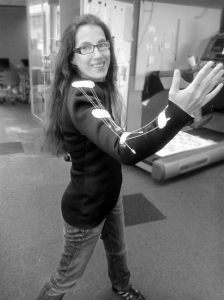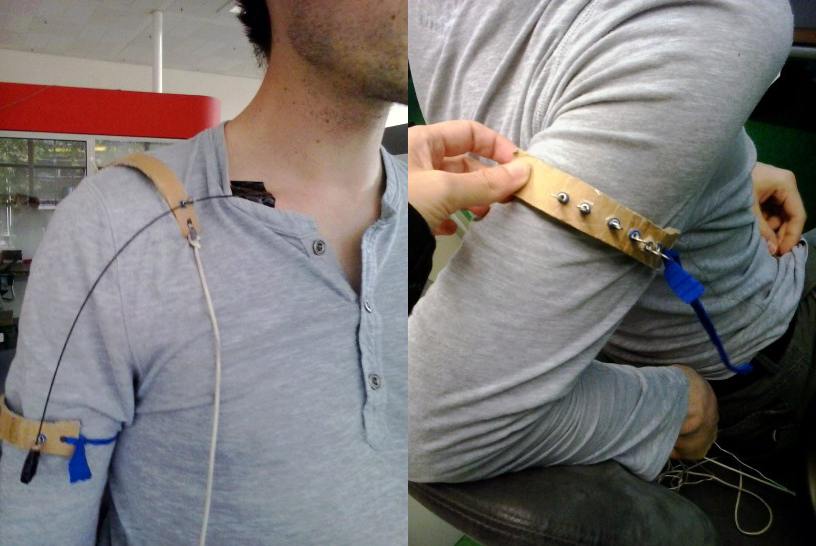For me, an interesting way of looking at the philosophy behind wearable technology is to see the technology that you carry everyday not as a smart phone, smart watch, ipad or whatever it may be, but to think of it more like an actual garment that you wear. Simple enough. By interweaving and integrating the technology we carry around into what we wear, proponents and creators of wearable technology are literally “making” fashion statements. Combining wireless technologies, micro-electromechanical systems and many other things, wearable technology is being used to alter the landscape of fashion.
So what happens when 3D printing meets wearable technology?
Well, there is the x.pose corset that vanishes in direct proportion to the amount of time you spend online, the BB Suit from Borre Akkersdijk just to name a few. You can even build your own 3D printed wearable cellphone.
What about 3D printed garments tailored to shape shift and react to your movements while they are on your body?
Meet Paola Tognazzi.

“I’ve been hired by the department of Wearable senses – University of Eindhoven to develop research about body-informed 3D printing: how to make a wearable garment, using the technology of 3D printing, able to react and accommodate physical movement, allowing the wearer to participate to the design of the shape through their own personal dynamics. The results will be integrated by the Dutch fashion designer Pauline van Dongen.”
You can see that the physical movement of the wearer changes the direction, thickness, volume as well as the structural characteristics of the 3D printed material. Within the geometric properties of the textile design exist different functionalities and reactive behaviors that connects to the dynamics of your body in motion or at a standstill.
How does she do this?
In order to pattern the textile correctly, Paola uses a kind of kinesthetic relativity theory, or a method of proprioception in order to communicate and combine dynamics data with design mechanisms, which also allow her to embed ‘triggers” within the material. That’s step one.
By applying dance and choreography techniques, Paola was able to develop simulations of patterns designs, which react to different directions of push and pull, so that the pattern transforms, thus changing the behavior of the textile.
For those of you who aren’t familiar with Pauline van Dongen, check out the first few minutes of this “Firestarters” video, part of a series by Discovery Channel Benelux (Belgium, the Netherlands and Luxemborg) and Vodaphone.




